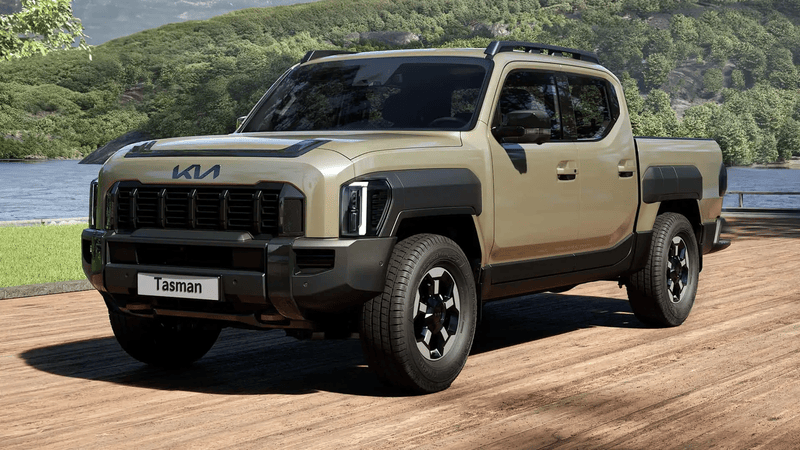Buy
Compare Cars
Guide
News
Select Language

English

عربي

کوردی
Download App
Get the best experience


Kia's Entry into the Pickup Market iQ Cars Interview
The automotive industry is constantly evolving, with new companies challenging established brands and reshaping the market landscape. One of the newest entrants is Kia, which is making a bold entry into the pickup truck segment with the launch of the Kia Tasman. This exciting development comes as part of Kia’s strategic push to diversify its lineup and appeal to a broader range of customers. Recently, Ihsan AbuBaker, our Sales Manager, had the opportunity to meet Mr. Karim Habib, Executive Vice President and Head of Global Design at Kia, as well as Mr. Spencer Cho, who oversees Global Business Planning. Together, they discussed Kia’s innovative approach to designing the Tasman and the company’s vision for the future of pickups. In this article, we’ll explore Kia's design process, the challenges they faced, and the brand’s commitment to sustainability in their upcoming models.
1. What makes Kia's approach to designing a pickup truck unique, especially compared to established players in the market?
We are very conscious that there are compelling pickup trucks on the market, so we wanted to offer something different, something new to the market. That’s why we focused, first and foremost, on usability. We wanted to approach this as a lifestyle tool, and that has been the design direction and the design focus.
2. How will the Tasman's design appeal to a diverse range of customers?
We believe that the Tasman is going to appeal to a specific set of customers. We think the combination of lifestyle-oriented functionality in the interior, as well as work-oriented or function-oriented usability on the exterior, allows it to address a wide range of customer needs. We know that the design is differentiated, and we purposely decided to do so because we believe it’s important to enter this market with a particular and unique voice.
Design Process
1. What were the biggest challenges and inspirations behind designing a pickup truck for Kia?
This is our first pickup truck. We did a lot of research into the typology, or the archetype, of pickup trucks, not only today but in history. This is why we looked as well into all sorts of trucks. If you look at the Tasman, you see some reference to 1970’s 18-wheeler trucks in the US, and that was one of our inspirations. However, we quoted a spirit, typology, not a specific design.
2. Can you share any specific design elements in the Tasman that you're particularly proud of?
I personally am proud of the general typology of the vehicle. I do believe, in its first impression, it is clearly identifiable as a pickup truck, but at the same time, I don’t think there is any one element that is exactly like any other pickup truck. The combination of all these proportions, typology, usability, and product design elements—the sum of these elements—creates something that is clearly a new type of pickup truck.
Future of Automotive Design
1. How do you see the future of automotive design, especially for pickups and SUVs? What trends are you excited about?
The future of automotive design is always very difficult to predict, but what we are working towards is a product that is highly technological, that adopts the best technology we can integrate, and at the same time, is clearly focused on the customer, the user, and the usability of the product. I believe both of those aspects will create something authentic, something honest, and at the same time, something very futuristic.
2. How is Kia incorporating sustainability into its future designs, and what can we expect to see in upcoming models?
At Kia, we believe that sustainability is a must. It is something we try to incorporate as much as we can in each and every product that we design and build. We have been working over the last years with a principle that we call ‘sustainability must-haves.’ This principle describes about 10 sustainable elements that every Kia has. That means recycled material, recyclable material, and biomaterials. We will continuously work on increasing the amount of sustainable, recyclable, and bio-material in our products.
Kia’s bold entry into the pickup market with the Tasman represents more than just a new vehicle; it signifies a shift towards more customer-focused and sustainable automotive design. With its unique approach to both usability and design, Kia is set to carve out a distinct identity in the competitive pickup truck segment. Moving forward, we can expect to see even more innovations from Kia, particularly in the areas of technology and sustainability, as they continue to push the boundaries of automotive design.


